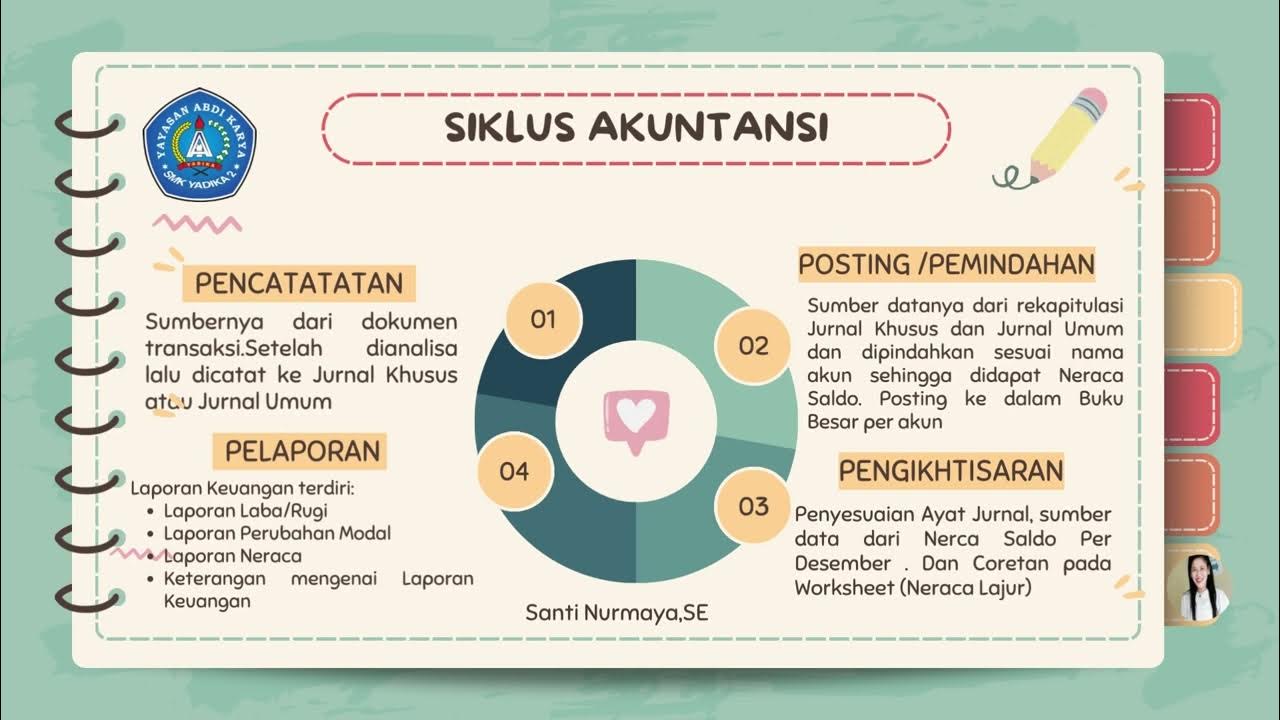Jurnal Perusahaan Dagang | Pengantar Akuntansi | Tutor Aja
Summary
TLDRIn this educational video, Calvin Klein explores the principles of financial accounting, focusing on journal entries related to trading transactions. He outlines the differences between the perpetual and periodic methods of recording transactions, illustrating each with practical examples. Key topics include purchasing inventory, handling transportation costs, managing returns, and accounting for discounts. Klein emphasizes the importance of accurately updating inventory values and accounts, as well as understanding shipping terms that affect buyer and seller responsibilities. This insightful session aims to equip students with essential skills for effective financial management in business.
Takeaways
- 📚 The course focuses on financial accounting, particularly the topic of journal entries for trading businesses.
- 📝 There are two methods for recording journals: perpetual and periodic. The perpetual method updates COGS with each transaction, while the periodic method updates at the end of the period.
- 💰 In the perpetual method, purchases directly increase inventory. For example, buying 38 units of a product adds to the inventory value.
- 🚚 Transportation costs for purchased goods are considered part of the purchase cost and also increase inventory value in the perpetual method.
- ↩️ Returns of purchased goods decrease both inventory and liabilities, while in the perpetual method, COGS is updated accordingly.
- 🔖 Discounts on payments reduce liabilities, and the amount paid after discounts must reflect the updated figures.
- 🏷️ When selling, the inventory decreases based on the cost of goods sold, which is crucial for calculating profits.
- 🔄 The return of sold goods involves reversing the sale entry, affecting both accounts receivable and inventory.
- 📦 Shipping terms impact who bears the transportation costs: shipping point means the buyer pays, while destination means the seller pays.
- ⚖️ Understanding journal entries and inventory management is essential for effective financial accounting in trading businesses.
Q & A
What is the main topic of the online course presented by Calvin Klein?
-The main topic of the course is financial accounting, specifically focusing on journal entries for trading transactions.
What are the two methods of journal entry recording mentioned in the transcript?
-The two methods are the perpetual method and the periodic method.
How does the perpetual method differ from the periodic method in updating inventory?
-In the perpetual method, inventory is updated with every transaction, while in the periodic method, inventory is only updated at the end of the period.
What is an example of a transaction using the periodic method?
-An example is purchasing goods on credit; the purchase amount is debited and credited as a liability without updating the inventory immediately.
What happens to inventory when goods are purchased using the perpetual method?
-In the perpetual method, the purchased goods are added directly to the inventory account upon purchase.
What is meant by 'freight costs' in the context of this course?
-Freight costs refer to the shipping costs incurred when purchasing goods, which are added to the inventory cost in the perpetual method.
How should returns from purchases be recorded in the journal?
-Returns should be recorded by debiting accounts payable and crediting inventory for the value of the returned goods.
What is the significance of discounts when paying off liabilities?
-Discounts reduce the amount owed; for example, if a company has a liability of 3,800 and receives a 2% discount, they only need to pay 3,400.
How is cost of goods sold (COGS) calculated in relation to sales?
-COGS is recorded when items are sold, reflecting the cost associated with the inventory that was sold during the period.
What are the implications of shipping terms like 'shipping point' and 'destination'?
-In 'shipping point,' the buyer bears the shipping costs, while in 'destination,' the seller bears those costs.
Outlines

Этот раздел доступен только подписчикам платных тарифов. Пожалуйста, перейдите на платный тариф для доступа.
Перейти на платный тарифMindmap

Этот раздел доступен только подписчикам платных тарифов. Пожалуйста, перейдите на платный тариф для доступа.
Перейти на платный тарифKeywords

Этот раздел доступен только подписчикам платных тарифов. Пожалуйста, перейдите на платный тариф для доступа.
Перейти на платный тарифHighlights

Этот раздел доступен только подписчикам платных тарифов. Пожалуйста, перейдите на платный тариф для доступа.
Перейти на платный тарифTranscripts

Этот раздел доступен только подписчикам платных тарифов. Пожалуйста, перейдите на платный тариф для доступа.
Перейти на платный тарифПосмотреть больше похожих видео

Akuntansi Penjualan Konsinyasi 2 AKUNTANSI BAGI PENGAMANAT

Mengelola Jurnal Khusus dan umum,Buku Besar, Laporan Keuangan Perusahaan Jasa,Dagang dan Manufaktur.

Transaksi Antar Perusahaan Afiliasi 2 - Penjualan / Pembelian Persediaan - Arus ke Bawah

[MEET 8-2] AKUNTANSI SEKTOR PUBLIK - TRANSAKSI BELANJA & BEBAN PPKD

Neng Ida Soniawati–Ekonomi XII-SMAN 1 Babakan Madang-Jurnal Penutup & Pembalik – Nov2022#pgtkjabar

Issue of Shares for consideration other than cash | Shares | Class 12 | Accounts | Part 4
5.0 / 5 (0 votes)
